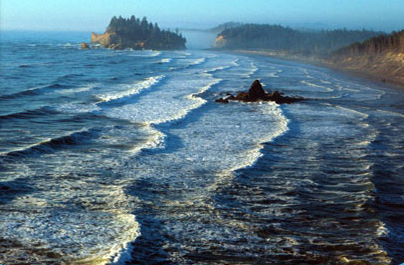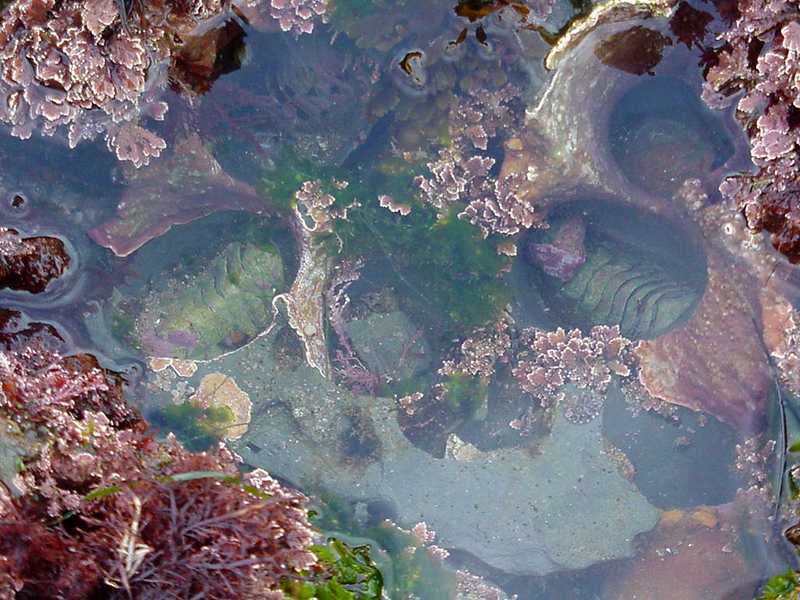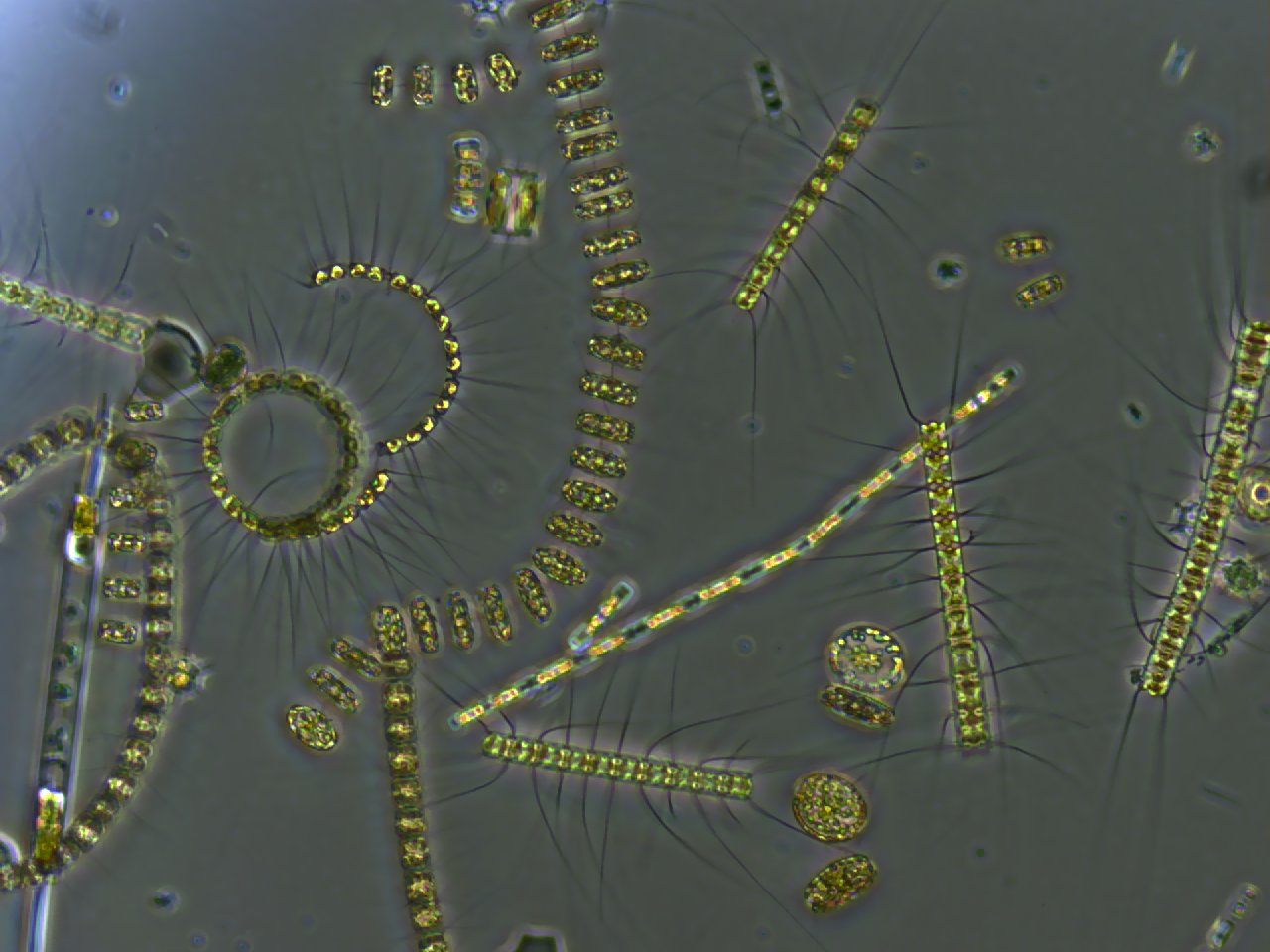|
Profundal
The profundal zone is a deep zone of an inland body of freestanding water, such as a lake or pond, located below the range of effective light penetration. This is typically below the thermocline, the vertical zone in the water through which temperature drops rapidly. The temperature difference may be large enough to hamper mixing with the littoral zone in some seasons which causes a decrease in oxygen concentrations. The profundal is often defined, as the deepest, vegetation-free, and muddy zone of the lacustrine benthal. The profundal zone is often part of the aphotic zone. Sediment in the profundal zone primarily comprises silt and mud. Organisms The lack of light and oxygen in the profundal zone determines the type of biological community that can live in this region, which is distinctly different from the community in the overlying waters. The profundal macrofauna is therefore characterized by physiological and behavioural adaptations to low oxygen concentration. While benthi ... [...More Info...] [...Related Items...] OR: [Wikipedia] [Google] [Baidu] |
Lake
A lake is an area filled with water, localized in a basin, surrounded by land, and distinct from any river or other outlet that serves to feed or drain the lake. Lakes lie on land and are not part of the ocean, although, like the much larger oceans, they do form part of the Earth's water cycle. Lakes are distinct from lagoons, which are generally coastal parts of the ocean. Lakes are typically larger and deeper than ponds, which also lie on land, though there are no official or scientific definitions. Lakes can be contrasted with rivers or streams, which usually flow in a channel on land. Most lakes are fed and drained by rivers and streams. Natural lakes are generally found in mountainous areas, rift zones, and areas with ongoing glaciation. Other lakes are found in endorheic basins or along the courses of mature rivers, where a river channel has widened into a basin. Some parts of the world have many lakes formed by the chaotic drainage patterns left over from the ... [...More Info...] [...Related Items...] OR: [Wikipedia] [Google] [Baidu] |
Limnetic Zone
The limnetic zone is the open and well-lit area of a freestanding body of freshwater, such as a lake or pond. Not included in this area is the littoral zone, which is the shallow, near-shore area of the water body. The key difference between the littoral zone and the limnetic zone is the presence of rooted plant growth. The floor under the limnetic zone cannot sustain plant growth due to a lack of sunlight for photosynthesis. In extremely shallow bodies of water, light may penetrate all the way to floor even in the deepest center parts of the lake. In this situation, there is an absence of a limnetic zone and the littoral zone spans the entire lake. Together, these two zones comprise the photic zone. There are two main sources of oxygen to the photic zone: atmospheric mixing and photosynthesis. Oxygen is dissolved when air interacts with water on the surface, and is increased with wave and wind action. Unlike the profundal zone, the limnetic zone is the layer that receives suf ... [...More Info...] [...Related Items...] OR: [Wikipedia] [Google] [Baidu] |
Littoral Zone
The littoral zone or nearshore is the part of a sea, lake, or river that is close to the shore. In coastal ecology, the littoral zone includes the intertidal zone extending from the high water mark (which is rarely inundated), to coastal areas that are permanently submerged — known as the ''foreshore'' — and the terms are often used interchangeably. However, the geographical meaning of ''littoral zone'' extends well beyond the intertidal zone to include all neritic waters within the bounds of continental shelves. Etymology The word ''littoral'' may be used both as a noun and as an adjective. It derives from the Latin noun ''litus, litoris'', meaning "shore". (The doubled ''t'' is a late-medieval innovation, and the word is sometimes seen in the more classical-looking spelling ''litoral''.) Description The term has no single definition. What is regarded as the full extent of the littoral zone, and the way the littoral zone is divided into subregions, varies in dif ... [...More Info...] [...Related Items...] OR: [Wikipedia] [Google] [Baidu] |
Littoral
The littoral zone or nearshore is the part of a sea, lake, or river that is close to the shore. In coastal ecology, the littoral zone includes the intertidal zone extending from the high water mark (which is rarely inundated), to coastal areas that are permanently submerged — known as the ''foreshore'' — and the terms are often used interchangeably. However, the geographical meaning of ''littoral zone'' extends well beyond the intertidal zone to include all neritic waters within the bounds of continental shelves. Etymology The word ''littoral'' may be used both as a noun and as an adjective. It derives from the Latin noun ''litus, litoris'', meaning "shore". (The doubled ''t'' is a late-medieval innovation, and the word is sometimes seen in the more classical-looking spelling ''litoral''.) Description The term has no single definition. What is regarded as the full extent of the littoral zone, and the way the littoral zone is divided into subregions, varies in different co ... [...More Info...] [...Related Items...] OR: [Wikipedia] [Google] [Baidu] |
Benthic Fauna
Benthos (), also known as benthon, is the community of organisms that live on, in, or near the bottom of a sea, river, lake, or stream, also known as the benthic zone.Benthos from the Census of Antarctic Marine Life website This community lives in or near marine or freshwater sedimentary environments, from s along the , out to the [...More Info...] [...Related Items...] OR: [Wikipedia] [Google] [Baidu] |
Benthic Zone
The benthic zone is the ecological region at the lowest level of a body of water such as an ocean, lake, or stream, including the sediment surface and some sub-surface layers. The name comes from ancient Greek, βένθος (bénthos), meaning "the depths." Organisms living in this zone are called benthos and include microorganisms (e.g., bacteria and fungi) as well as larger invertebrates, such as crustaceans and polychaetes. Organisms here generally live in close relationship with the substrate and many are permanently attached to the bottom. The benthic boundary layer, which includes the bottom layer of water and the uppermost layer of sediment directly influenced by the overlying water, is an integral part of the benthic zone, as it greatly influences the biological activity that takes place there. Examples of contact soil layers include sand bottoms, rocky outcrops, coral, and bay mud. Description Oceans The benthic region of the ocean begins at the shore line ... [...More Info...] [...Related Items...] OR: [Wikipedia] [Google] [Baidu] |
Lake Stratification
Lake stratification is the tendency of lakes to form separate and distinct thermal layers during warm weather. Typically stratified lakes show three distinct layers, the Epilimnion comprising the top warm layer, the thermocline (or Metalimnion): the middle layer, which may change depth throughout the day, and the colder Hypolimnion extending to the floor of the lake. Definition The thermal stratification of lakes refers to a change in the temperature at different depths in the lake, and is due to the density of water varying with temperature. Cold water is denser than warm water and the epilimnion generally consists of water that is not as dense as the water in the hypolimnion. However, the temperature of maximum density for freshwater is 4 °C. In temperate regions where lake water warms up and cools through the seasons, a cyclical pattern of overturn occurs that is repeated from year to year as the cold dense water at the top of the lake sinks (see stable and unstable ... [...More Info...] [...Related Items...] OR: [Wikipedia] [Google] [Baidu] |
Phytoplankton Bloom
An algal bloom or algae bloom is a rapid increase or accumulation in the population of algae in freshwater or marine water systems. It is often recognized by the discoloration in the water from the algae's pigments. The term ''algae'' encompasses many types of aquatic photosynthetic organisms, both macroscopic multicellular organisms like seaweed and microscopic unicellular organisms like cyanobacteria. ''Algal bloom'' commonly refers to the rapid growth of microscopic unicellular algae, not macroscopic algae. An example of a macroscopic algal bloom is a kelp forest. Algal blooms are the result of a nutrient, like nitrogen or phosphorus from various sources (for example fertilizer runoff or other forms of nutrient pollution), entering the aquatic system and causing excessive growth of algae. An algal bloom affects the whole ecosystem. Consequences range from the benign feeding of higher trophic levels to more harmful effects like blocking sunlight from reaching other organis ... [...More Info...] [...Related Items...] OR: [Wikipedia] [Google] [Baidu] |
Phytoplankton
Phytoplankton () are the autotrophic (self-feeding) components of the plankton community and a key part of ocean and freshwater ecosystems. The name comes from the Greek words (), meaning 'plant', and (), meaning 'wanderer' or 'drifter'. Phytoplankton obtain their energy through photosynthesis, as do trees and other plants on land. This means phytoplankton must have light from the sun, so they live in the well-lit surface layers ( euphotic zone) of oceans and lakes. In comparison with terrestrial plants, phytoplankton are distributed over a larger surface area, are exposed to less seasonal variation and have markedly faster turnover rates than trees (days versus decades). As a result, phytoplankton respond rapidly on a global scale to climate variations. Phytoplankton form the base of marine and freshwater food webs and are key players in the global carbon cycle. They account for about half of global photosynthetic activity and at least half of the oxygen production, despi ... [...More Info...] [...Related Items...] OR: [Wikipedia] [Google] [Baidu] |
Ammonia
Ammonia is an inorganic compound of nitrogen and hydrogen with the formula . A stable binary hydride, and the simplest pnictogen hydride, ammonia is a colourless gas with a distinct pungent smell. Biologically, it is a common nitrogenous waste, particularly among aquatic organisms, and it contributes significantly to the nutritional needs of terrestrial organisms by serving as a precursor to 45% of the world's food and fertilizers. Around 70% of ammonia is used to make fertilisers in various forms and composition, such as urea and Diammonium phosphate. Ammonia in pure form is also applied directly into the soil. Ammonia, either directly or indirectly, is also a building block for the synthesis of many pharmaceutical products and is used in many commercial cleaning products. It is mainly collected by downward displacement of both air and water. Although common in nature—both terrestrially and in the outer planets of the Solar System—and in wide use, ammonia i ... [...More Info...] [...Related Items...] OR: [Wikipedia] [Google] [Baidu] |
Hydrobiologia
''Hydrobiologia'', ''The International Journal of Aquatic Sciences'', is a peer-reviewed scientific journal publishing 21 issues per year, for a total of well over 4000 pages per year. ''Hydrobiologia'' publishes original research, reviews and opinions investigating the biology of freshwater and marine habitats, including the impact of human activities. Coverage includes molecular-, organism-, community -and ecosystem-level studies dealing with biological research in limnology and oceanography, including systematics and aquatic ecology. In addition to hypothesis-driven experimental research, it presents theoretical papers relevant to a broad hydrobiological audience, and collections of papers in special issues covering focused topics. History ''Hydrobiologia'' changed on the appointment of Henri Dumont to be its editor-in-chief. He introduced peer review, and expanded production from 6 issues per year to more than 20 per year. Koen Martens took over the responsibility as editor- ... [...More Info...] [...Related Items...] OR: [Wikipedia] [Google] [Baidu] |








-3D-balls.png)